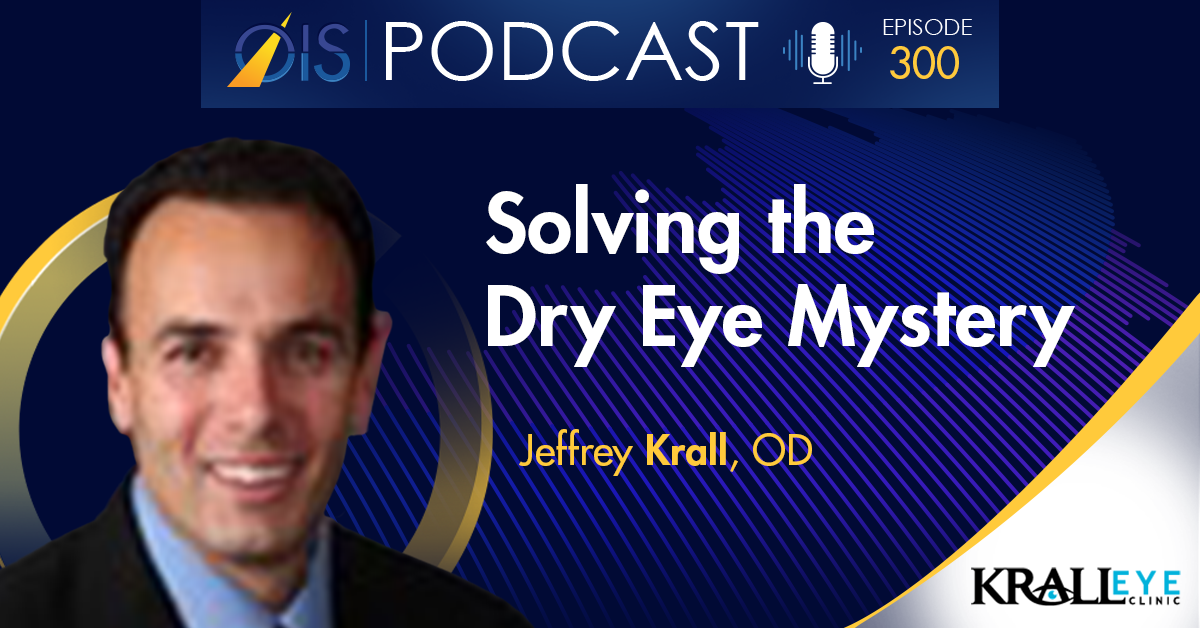Solving the Dry Eye Mystery With Neurolens’ Jeffrey Krall, OD

Click here to watch the video version of this podcast.
How many patients have chronic dry eye symptoms that persist after they’ve had every available therapy? The estimates vary. (A recent Dry Eye Directory estimate puts the number at 16 million to 49 million.) Whatever the number, they all may have an imbalance between the peripheral visual tracking system and central fixation.
Jeffrey Krall, OD, an optometrist in Mitchell, South Dakota, discovered the connection between this imbalance and digital vision syndrome (DVS), a complex of symptoms related to digital device use. He created Neurolens to test, diagnose, and treat those symptoms.
A life-long tinkerer who comes from a long lineage of optometrists and ophthalmologists, Dr. Krall realized that many patients’ headaches, neck strain, and dry eye symptoms stemmed from an overworked trigeminal nerve. The constant effort the extraocular muscles exert to correct eye misalignment stimulates the nerve, leading to pain and strain.
OIS Podcast host Paul Karpecki, OD, speaks with Dr. Krall about his experience designing a lens to correct eye misalignment. Though new to ophthalmic innovation, support from a few eye care and neurology experts helped him move forward, despite skeptics. Early clinical data has removed much of their doubt: In one study 83% of Neurolens wearers reported improvement in DVS symptoms.
Listen to the podcast to discover:
• The organic evolution of Neurolens, including the support Dr. Krall received from eye care leaders such as Vance Thompson, MD, and ophthalmic venture capitalist J. Andy Corley (now Neurolens’ chairman of the board).
• The technology behind Neurolens that allows it to measure 10,000 data points to identify and resolve misalignment.
• What Dr. Krall has found as a trigger for myopia and a possible solution.
• The Krall family history, which takes place primarily in Mitchell, South Dakota, and involves four generations of optometrists/ophthalmologists and close family bonds.
Click “play” to listen to the podcast.
